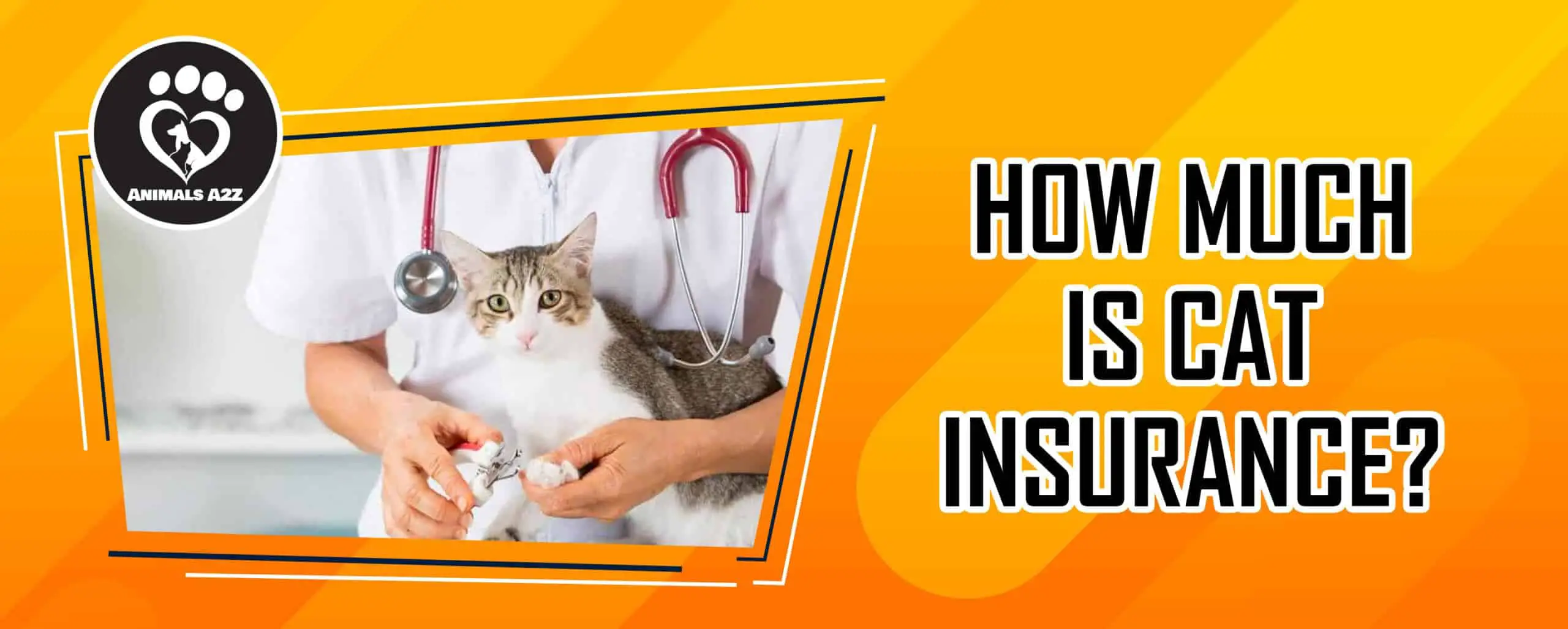A question a lot of cat owners ask themselves is how much will it cost to insure their beloved feline. In the US, the average cost to insure a cat is $30 per month. This is for a policy that will cover both accidents and illnesses.
Cat insurance can cost as little as $10 a month and go up to $40 a month, depending on the cat’s age, breed and gender. Where you live and the type of insurance policy you choose will also affect the cost of pet insurance. While an accident-only policy is the cheapest, a lifetime policy will be more expensive.
Read on to find out what affects the cost of cat insurance and how you can find the best insurance deal for your cat on comparison sites.
Table of Contents
Why you need cat insurance
Owning a pet is a big responsibility and requires a long-term commitment to look after them through sickness and health. Unfortunately, pet owners never know when their pet might get an injury or come down with an illness.
The cost of treatment at the vet rises each year, which is where pet insurance can come in and help. It gives owners peace of mind, knowing that they can make a claim on an expensive vet bill and only have to pay the deductible. Some vet bills can reach thousands of dollars, depending on what treatment is needed.
Our top3 cat insurance providers
PetPlan - Start quote
Eusoh - Start quote
Petsbest - Start quote
Average monthly cost for cat insurance average between $20 for kittens and $100 per month for older cats. Remember to always get quotes from more than one provider!
What affects the cost of cat insurance?
When you are searching for a cat insurance quote, you are often asked to give certain details about your pet. These are then used for the insurance company to calculate how much of a risk the cat is and to give an accurate price quote. Below are some key aspects that go into the cost of cat insurance.
Age
The younger a cat is, the cheaper the insurance monthly premium will be. This is because a young cat is usually at its healthiest and there is less of a risk of them developing long term conditions such as diabetes or arthritis.
An older cat is a high risk, which is why insurance premiums are more expensive for them. This is why it is important to get insurance for your cat as soon as you buy or adopt them, especially if they are still young.
Breed
Certain breeds, especially prestige breeds such as Maine Coons or Bengal cats, have more expensive premiums. Some insurance policies can even cost as much as $450 per year for these breeds. Other breeds that might be expensive are Sphynx and Persian cats.
Domestic shorthairs, which are also known as Moggies, are one of the cheapest breeds to insure as they are quite common. Ragdoll and British shorthair cats have similar low annual premiums, which might suit people who aren’t fussed about what breed their cat is.
Gender
Some people aren’t aware that a cat’s gender can play into how much their insurance costs. This is because male cats are often seen as a higher risk, due to them getting into fights more often, especially if they venture outdoors a lot.
Male cats can also have certain illnesses or issues that a female cat won’t have, which can cost more to treat in the long run.
Location
Depending on where you live, this might increase the cost of insurance premiums. The reason for this is that the cost of vet procedures and treatments varies from one place to the next, depending on the cost of living in the area.
Large cities that are more expensive to live in such as London or New York City will have higher insurance premiums than a smaller town or city.
What isn’t covered by cat insurance?
Old age isn’t always covered
Some insurance providers won’t provide coverage to cats above a certain age. An old cat is classed as one over the age of eight, however there are some insurance providers that specialize in covering older cats.
Pre-existing conditions
Most insurance providers also won’t cover any pre-existing conditions a cat might have before the insurance coverage starts. This includes any illnesses or accidents that need treatment. Although, some insurance providers won’t classify something as pre-existing if the cat hasn’t suffered symptoms in the last few years.
Routine care and other needs
Other things that can be excluded from cat insurance include:
- Routine procedures such as vaccinations and boosters
- Annual checks
- Dental care
- Spaying and neutering
- Pest infestations
- If a pet needs to be put to sleep
Insurance policies will differ slightly, and every provider can exclude different things. There might be some insurance providers who will cover dental care, but this will often increase the premium.
Frequently asked questions about cat insurance
Which insurance policy is the most expensive?
The most expensive type of insurance is the lifetime policy. When activated, it will allocate a set amount per year that is reset if the policy is renewed at the end of the year.
A lifetime policy will allow a cat to receive treatment for however long they need it, even if it extends past one year. In comparison, if you had a time-limited policy that ran out after a year, any illness your cat suffered from would be classified as a pre-existing condition once the policy ended. This would make it difficult to get insurance to cover it again in the future.
How do I find the best cat insurance?
There are a number of comparison websites that will allow you to input all your pets’ details and compare the policies from providers. You will easily be able to see what the policy will cover, how much the excess fee is and how much you will have to pay monthly.
You can also visit an insurance providers website to receive a free quote directly from them.
Shop around to find the best cat insurance deal
The price of cat insurance can vary depending on the type of policy and the insurance provider you choose. The best way to see the cost of pet insurance is to research different providers or go on comparison sites to see who has the best deal for your cat.


